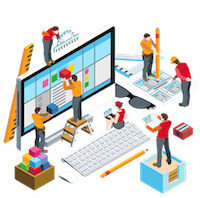Software testing best practices, techniques, approaches, tools and methods have changed so much over the last decade. The rapid adaptation of Agile Testing, Continuous Integration (CI), Continuous Development (CD) and DevOps methodology by many business organizations mean introduction of core testing activities and Quality Assurance process at an earlier phase of the SDLC process. As a result, we have been noticing some distinct emerging software testing trends that will shape the future of the QA, Testing industry. Hence if you are a software testing professional, or a QA, testing service provider company or a customer looking to hire a testing company, read on.
Top 5 Emerging Software Testing Trends This Year
The software testing and quality assurance industry is evolving to uncharted territories in areas such as agile test automation, performance engineering and application security testing. Mobile Automation is also one of the most sort after areas as far as test automation is concerned. Identifying these emerging software testing and QA trends can help software testing companies and testing professionals to re-skill themselves.

This list of emerging QA trends is based on our experience with working with leading Fortune 500 companies and software testing industry analyst research papers. Each of these trends can help enterprises as well as testing professionals to re-strategize and re-skill themselves and their employees. Here are the top 5 latest software testing trends that every testing organization and testing practitioner should follow and re-skill to stay ahead of their competition.
1. Era of Open Source Test Automation Tools
It wouldn’t be fair to write about latest software testing trends without mentioning open source testing automation tools. The factor that made Open Source Testing Tools so popular has been the cost, since these tools are free to use and readily available to the general mass. Additionally, such open source testing tools are easily customizable, are more flexible than similar paid tools.
Judging by the continuing trend, test automation tools such as Selenium, Appium, JMeter and SoapUI will continue to be in demand. Moving forward, we expect more and more organizations to adopt such open source automation tools for faster implementation of DevOps, Test Automation, and Agile Testing.
2. Increasing Demand for “Quality at High Speed”
Today, most customers want the best software products in the fastest possible time. This makes the importance of testing even more pronounced. As a software developer company, you no longer have the luxury to deliver mediocre products, nor do you have the ability to take ages to deliver it.
The only way you are going to be able to deliver top quality products in record time is by combining the best user experience along with the fastest time to market. Using “rapid testing practices” such as leveraging CredibleSoft’s Cross Browser Test Automation Accelerator frameworks can help you achieve such goals.
3. Growing Importance of Agile Testing and Continuous Delivery
Continuous integration (CI) and agile testing powered continuous delivery (CD) help organizations to push stable releases on a consistent basis. However, with the rapid increase in the number devices and platforms the chances of introduction of errors also increases multi-fold. Thus testing tools are required to be more developer-friendl, there is going to be an increasing demand for tester engineers with development skills and hence test automation is going to play a very important role.
4. Shift of Focus from Quality Assurance (QA) to Quality Engineering (QE)
Gone are the days when Quality Assurance (QA) used to follow a systematic waterfall approach towards testing. The step by step process meant that the testing was thorough but very lengthy too. With increasing demand of agile development practices and the advent and popularity of CI, CD and agile rapid testing practices had rendered traditional QA outdated.
FIND OUT: Top 5 Best QA, Testing, Test Automation Companies in India
With Quality Engineering (QE) now we can introduce software testing and test automation process much earlier in the SDLC process rather than at the customer’s acceptance testing phase.
5. Software Testing Budgets Continue to Grow
With such immense focus and great demand for high quality software products (client-server, desktop, web and mobile), and with latest technology trends such as BigData analytics, Cloud hosted SaaS services, Internet of Things (IoT), Mobility, Digital Transformation, and Virtualization, Software Testing has become more than just an afterthought. This is pushing organizations towards allocating a much bigger chunk of their IT budget (estimated at around 40%) for software testing and QA activities.
Conclusion
We at CredibleSoft have an award-winning rockstar testing team that works continuously to stay up to date as far as the latest software testing trends and demands of software testing are concerned. We continuously work as an organization to ensure that each and every member of our Quality Engineering (QE) team are re-skilled so that we are able to offer “Quality at Highest Possible Speed” while helping our customers. We have been serving SMBs, Fortune 500 companies as well as Startups with their QA, testing and test automation needs for over a decade now.
If you are a business who is looking for some serious QA testing services to be outsourced, then look no further. So what are you waiting for? Use this form to request an estimation and we’ll prepare and share the same with you free of cost.








